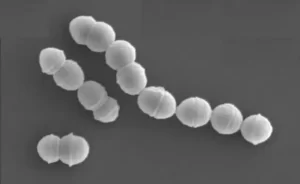Transmitted between humans and pigs nearly 400 times since the H1N1 influenza pandemic
- Child Products from Aliexpess and Temu Contain Carcinogens 3026x Over Limit
- Daiichi Sankyo/AstraZeneca’s Enhertu Shows Positive Results in Phase III DESTINY-Breast06 Clinical Trial
- Mn007 Molecules Offer Potential for Combating Streptococcus pyogenes Infection
- Popular Indian Spices Banned in Hong Kong Over Carcinogen Concerns
- AstraZeneca Admits for the First Time that its COVID Vaccine Has Blood Clot Side Effects
- Gut Bacteria Enzymes Offer Hope for ABO Universal Blood Transfusions
Transmitted between humans and pigs nearly 400 times since the H1N1 influenza pandemic
- AstraZeneca Admits for the First Time that its COVID Vaccine Has Blood Clot Side Effects
- Was COVID virus leaked from the Chinese WIV lab?
- HIV Cure Research: New Study Links Viral DNA Levels to Spontaneous Control
- FDA has mandated a top-level black box warning for all marketed CAR-T therapies
- Can people with high blood pressure eat peanuts?
- What is the difference between dopamine and dobutamine?
- How long can the patient live after heart stent surgery?
The “swine flu” strain has been transmitted between humans and pigs nearly 400 times since the H1N1 influenza pandemic.
A new study of pdm09, the strain of influenza A virus responsible for the 2009 H1N1 influenza pandemic, shows that the virus has passed from humans to pigs about 370 times since 2009, with subsequent transmission among pigs leading to evolution of pdm09 variants, which in turn passed from pigs to humans.
Alexei Malkin of the USDA Agricultural Research Service and colleagues published the research in the open-access journal PLOS Pathogens.

Influenza A can cause influenza in humans, birds, pigs and some other mammals. In 2009 and 2010, pandemics caused by pdm09 killed thousands of people worldwide.
Since then, as previous studies have shown, the pdm09 virus has jumped from humans to pigs multiple times, and the spread of the virus in pig herds has led to evolutionary changes in pdm09 that make it more likely to pass back and infect humans.
To gain insight into this risk, Markin and colleagues analyzed data on the spread of pdm09 between 2009 and 2021. They also investigated how these interspecies events affected the genetic diversity of the virus in pigs and the subsequent risk of infecting humans.
The analysis showed that since 2009, pdm09 has been transmitted from humans to pigs about 370 times. Most of these events occurred during periods of highest human pdm09 infection rates.
Pdm09 transmission in humans declined during the COVID-19 pandemic in 2020 and 2021, but continued in pigs due to approximately 150 human-to-pig events between 2018 and 2020 .
The researchers found that most human-to-pig transmission events were isolated, but there were also a few events that resulted in the continued transmission of different pdm09 gene lines in U.S. pig herds.
These herd-transmitted variants appear to be genetically mismatched to the human seasonal vaccine, suggesting that the vaccine offers little protection against them.
The analysis also revealed that the sustained transmission of pdm09 in the herd was associated with at least five pig-to-human transmission events.
The findings add to growing evidence that controlling influenza A infection in humans who work with pigs can help prevent transmission to pigs, which in turn reduces the risk of transmission back to humans.
The authors add: “Controlling influenza A virus infection in humans minimizes virus transmission to pigs and reduces the diversity of viral cycles in the herd.
Limiting the diversity of viruses in the herd minimizes the risk of novel viruses emergence and the potential for transmission of influenza A virus from pigs to humans”.
(source:internet, reference only)
Disclaimer of medicaltrend.org
Important Note: The information provided is for informational purposes only and should not be considered as medical advice.



